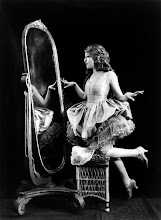The 1930s and 40s are often given the title of the “Golden Age of Hollywood”since it saw the rise of the studio system, some of Hollywood’s most famous and enduring stars, as for studios churning out new films like mass manufactured factory products. I have always thought of the “Golden Age of Hollywood” as a much larger time period, from the Silent Film Era of the 1910s until the mid-1960s when the cultural revolutions took over Hollywood and films became more about shock value and pushing boundaries than producing enjoyable content.
In our modern times, film has become about the bottom line, test audiences, how many action figures can be produced, and originality has been left on the cutting room floor. Most of the films we see now are remakes of older films, adaptations from books, bio pics, or ideas that are so formulaic and repetitive that you can decipher the plot before you even walk into the theatre, pay about ten bucks for your ticket and another ten for your popcorn and soda. Not to say that there hasn’t been a single good movie since 1965. I enjoy tons of modern films, but before the modern era, film was different. It had an unattainable essence of romance, creativity, and originality we now lack.
In the earliest of days, everything was new and an experiment. Special effects have come along way and seeing how far we’ve come when watching “King Kong” is an amazing experience. Filmmakers, writers, and executives gave more credit to the audience in these older films, believing they could follow along with witty, quick dialogue exchanges, sudden plot turns, and didn’t patronize them by over explaining everything to them, giving them credit for paying attention and picking up on plot details. Now if you want to feel like an intelligent audience member, you are relegated to watching indie films or films which are getting so much Oscar buzz people believe them to be too complicated for the average viewer to understand. Actors then had more theatre training, most of them performing for periods on stage in places like New York and London before moving to Hollywood. Silent film stars rely solely on their emotions to convey what is happening in a scene and it is amazing to see how they can communicate with the audience without the power of words.
I find that by watching older movies, I can understand newer ones more easily. Not to mention that there is something inherently romantic about watching classic film. It is also interesting to see how they portrayed scenes of love and violence during the times of the Hays Code and the creativity that went into making sure the audience read between the lines to find out what was going on. I think modern filmmakers need to go back to their roots and see what it was that made film so great during the Golden Years.
Tuesday, September 9, 2008
Subscribe to:
Post Comments (Atom)






No comments:
Post a Comment